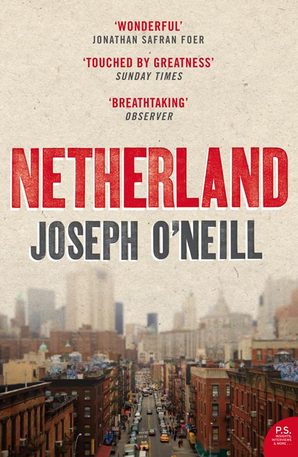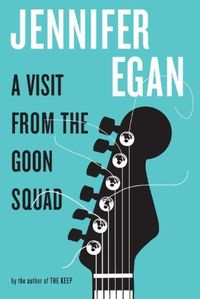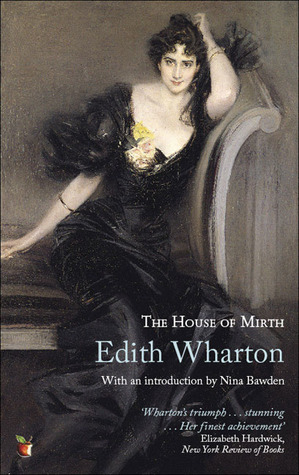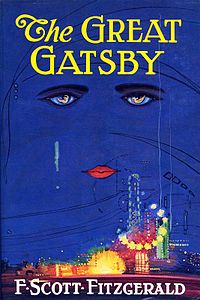Serious beach reads: 5 New York-centric books to pack on your next vacation

Planning to hit the beach today or later this summer? Consider bringing a little piece of NYC with you, via one of these novels that takes place in the city. And while “beach read” is sometimes a derogatory phrase, used for easily digestible fluff rather than serious works of art, these five books come with some intellectual heft—and perhaps new insights into the city you call home (when you’re not busy sunbathing, that is).

Netherland, by Joseph O’Neill
In honor of the 2016 Summer Olympics, consider this sports-oriented novel… about cricket in NYC. Yes, the British-born game is actually played here, and the heroes of Netherland are a group of New Yorkers who know a bump ball from a sticky wicket. Part of the joy of reading about New York is seeing it through new eyes, and Joseph O’Neill’s immigrant protagonists provide fresh perspectives on the city.
O’Neill was born in Ireland and lived a peripatetic childhood, eventually settling in the Netherlands. Later, he attended university in England before relocating to NYC, and his European upbringing allows him to delve into a fascinating New York subculture. His narrator, Hans van den Broek, is a Dutchman and cricket fan who befriends Chuck Ramkissoon, a charismatic Trinidadian immigrant with a pipe dream of creating a cricket arena in the city.
For the time being, though, the people who play cricket—primarily West Indian and South Asian immigrants—are forced to make do on the insufficient grounds of outer-borough public parks. They’re playing, too, in the long shadow of 9/11; Hans meets Chuck after a post-disaster breakup and move uptown. O’Neill gorgeously renders how the city’s many corners, from Staten Island to Coney Island Avenue, continue to thrive in the wake of tragedy. It doesn’t matter if you know nothing about cricket when you get such spot-on revelations about the city as these:
“The taillights, the coarse blaze of deserted office buildings, the lit storefronts, the orange fuzz of the street lanterns: all this garbage of light had been refined into a radiant atmosphere that rested in a low silver heap over Midtown and introduced to my mind the mad thought that the final twilight was upon New York.”

A Visit from the Goon Squad, by Jennifer Egan
Egan’s Pulitzer Prize-winning book of linked stories dabbles in speculative fiction and jumps around in time and space, and the sections set in NYC are particularly memorable. In the first, “Found Objects,” we meet a protagonist with an unfortunate compulsion—kleptomania—whose circumstances should be otherwise relatable to anyone who has been young and struggling in the city. Sasha, an assistant to a record producer, lives in a Lower East Side apartment with a tub in the kitchen, but what she lacks in fancy digs she makes up for in New York savvy. When her non-native boyfriend complains that he’d rather live somewhere else, she responds: “There is nowhere else.” The sentiment, which can resonate with even the most down-on-her luck New Yorker, echoes John Updike’s assertion that “the true New Yorker secretly believes that people living anywhere else have to be, in some sense, kidding.”
Later stories also touch upon New York’s capacity to inspire and infuriate at the same time: One character, taking in the expansive views from a wealthy friend’s office, thinks: “If I had a view like this to look down on every day, I would have the energy and inspiration to conquer the world. The trouble is, when you most need such a view, no one gives it to you.” At the same time, though, he sees the city’s vastness as a kind of equalizing force: “There was only an infinitesimal difference… between working in a tall green glass building on Park Avenue and collecting litter in a park. In fact, there may have been no difference at all.”
The final story, “Pure Language,” unfolds in a future NYC, playing off adult preoccupations with the influence of digital media-obsessed young people. In this world, pre-verbal infants drive the zeitgeist through the use of “kiddie handsets.” Their parents, meanwhile, are nostalgic for a more analog way of life, and for an older New York. Despite its sci-fi angle, the story successfully taps into the feeling that longtime New Yorkers experience eventually: that their beloved version of the city is gone, never to return. One city-weary character thinks, “Enough years had managed to pass that he felt like he’d seen every person in Manhattan at least once.” The primary theme of this unusual and engaging book is the passage of time, and given how quickly life moves in NYC, it offers a rare opportunity to take a moment to reflect on the past.

The House of Mirth, by Edith Wharton
Given that this is Edith Wharton, we know that the “mirth” of her novel’s title doesn’t necessarily mean we’re in for endless laughs. And though many of the events that befall protagonist Lily Bart are indeed grim, the book’s portrait of Gilded Age New York will transport you to an incarnation of the city that is glamorous and unfamiliar—though ultimately oppressive.
It turns out that the aristocrats of turn-of-the-century New York were no less vicious than the Real Housewives of today, and Lily’s desperation to stay in good stead with her fellow socialites doesn’t end in happiness. In her quest to marry well and wealthily, Lily commits many errors in matters of both romance and money, dismissing the man she loves because he isn’t rich enough, and making risky investments on Wall Street. But Lily isn’t wholly to blame: Wharton’s real purpose was to expose a materialistic and moralistic culture that was particularly brutal to young women.
Amid the social criticism, readers get a glimpse into a New York where the rich traveled by horse and carriage, attended debutante balls, and vacationed in sprawling country homes. Despite their luxurious circumstances—remember, this is unfolding at the same time as poor immigrants were living crammed into dangerous tenements downtown—the characters here are unsatisfied, constantly scrambling for more. (Sound familiar?) New Yorkers are always lamenting how much the city has transformed, but read The House of Mirth and you may decide that the more things change, the more they stay the same.

The Great Gatsby, by F. Scott Fitzgerald
Sometimes it’s worthwhile to return to a classic. Sure, we all read Gatsby in tenth-grade English class, but in revisiting the novel as an adult, you may find that the intervening years have allowed you to grasp nuances you missed the first time around. Plus, given its inclusion of so many glitzy Long Island settings, the book is perfectly suited to beach reading.
Looking at the novel’s real life analogues reveals what has changed—and what hasn’t—about the New York area. The moneyed towns of West Egg and East Egg are Great Neck and Sands Point, respectively, prosperous areas to this day, while the “valley of ashes” between Long Island and New York where Tom Buchanan’s mistress lives may be what today is Flushing Meadow Park. (Per LitKicks, the park used to be a massive trash-burning site.) The glittering Manhattan that the characters visit—some of the plot’s major revelations unfold in a suite at the Plaza Hotel—bears more than a passing resemblance to the increasingly gilded city of the present. (Consider this CityLab article, which visualizes Manhattan's dramatic income gap; the divisions between haves and have nots today seem as significant as they were in the Gatsby era.) And equally persistent is Gatsby’s goal of reinvention of the self—a motivation that pre-dates Gatsby and still fuels so many of the city's new arrivals.
In returning to the story, readers may see more closely Gatsby’s conflation of flighty Daisy Buchanan with the wealth he craves, as well as the danger of always reaching for greater achievement. This can be a tough pill to swallow for ambitious New Yorkers, but at the end of the book, it’s the coolheaded and clear-eyed Nick—perhaps the voice of our weathered-but-still-hopeful city itself—who evades tragedy.

Random Family, by Adrian Nicole LeBlanc
LeBlanc’s nonfiction book is a remarkable accomplishment, the result of over a decade of immersion in the lives of her subjects. The true story—operatic in its scale and drama—hinges on Latino families in the South Bronx, a corner of the city typically overlooked by New York art and literature.
The real people that populate this other NYC are unforgettable, and thanks to LeBlanc’s exquisitely detailed reporting, we become entangled in their complicated lives. Jessica, a charismatic and savvy 16-year-old, hooks up with a local drug dealer called Boy George; as he becomes a kingpin and showers her with wealth, it’s easy to understand his draw. The other protagonist, Coco, dates one of Jessica’s brothers, himself an aspiring gangster; though Coco is a survivor, tough and willing to fight, she’s also incredibly lovable, and makes it to young adulthood with her ebullient personality intact.
The two women have children, experience homelessness and incarceration, striving—and often failing—to leave their Tremont neighborhood behind. Readers baffled by what they perceive as the poor choices of poor people will gain a new clarity about the cycle of poverty from Random Family. Though you won’t find a happy ending here, you will discover memorable characters and a deeper understanding of New York.
You Might Also Like































